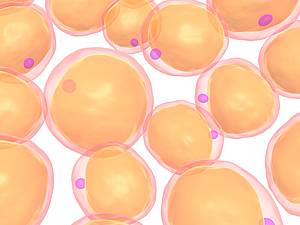The development of fat transplants
Human fat cells have a size of up to 0.2mm and have a lifespan of around 5 weeks.
Transplanting of body fat tissue has been experimented with since 1893. In the years that followed, the results ranged from outstanding to complete failure, in the worst cases to calcification and oily nodes. The recovery of fat was problematic for two reasons: first, it was problematic to obtain enough fat of good quality and second, the suctioned fat was often clumped.
In 2007, Colemann developed a method of fat transplant that was very inconvenient and time-consuming: fat was suctioned by hand with a small 5ml syringe, then centrifuged and spread over the tissue with a 1ml syringe. The quality of the mechanically suctioned and centrifuged fat of this method was insufficient, and in addition much too little fat could be processed with this technique. For all that, this operation lasted up to 6 hours.


